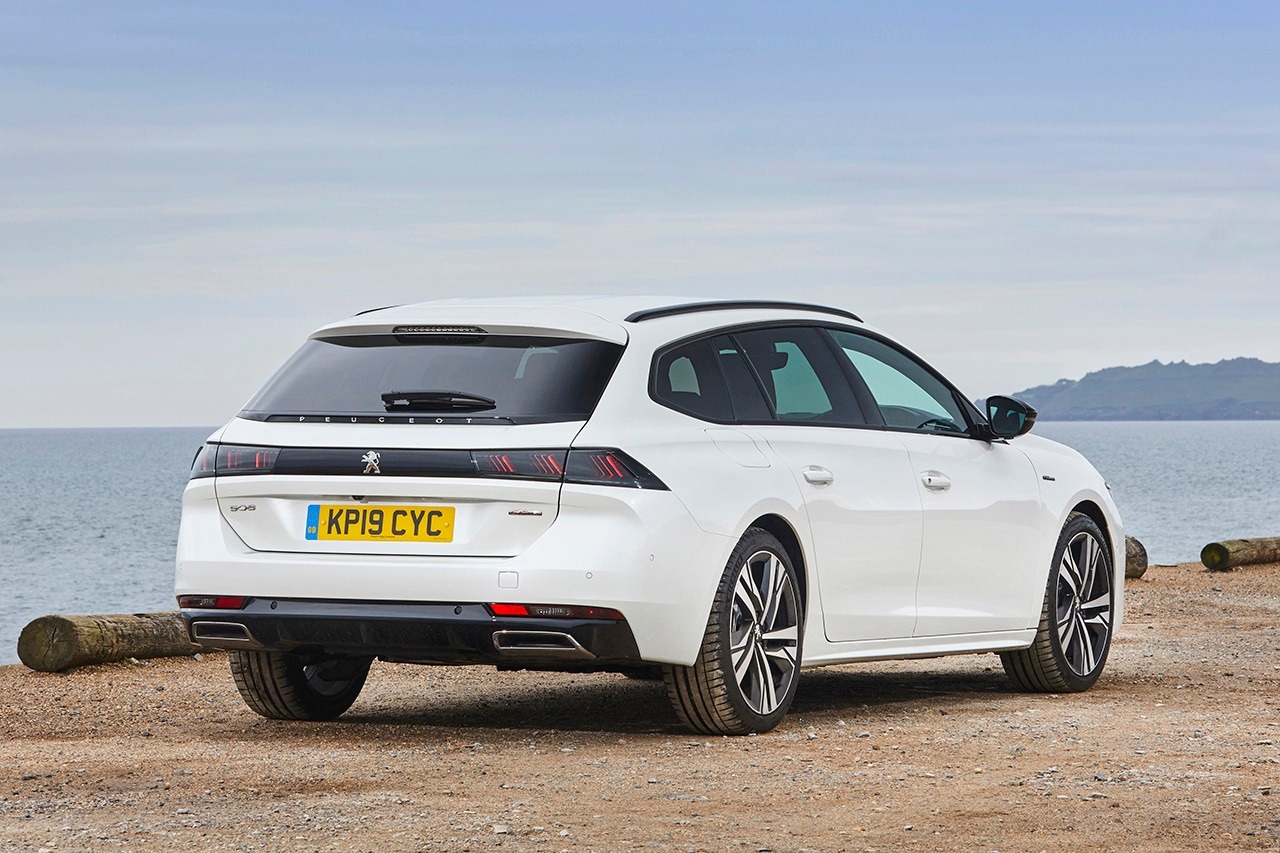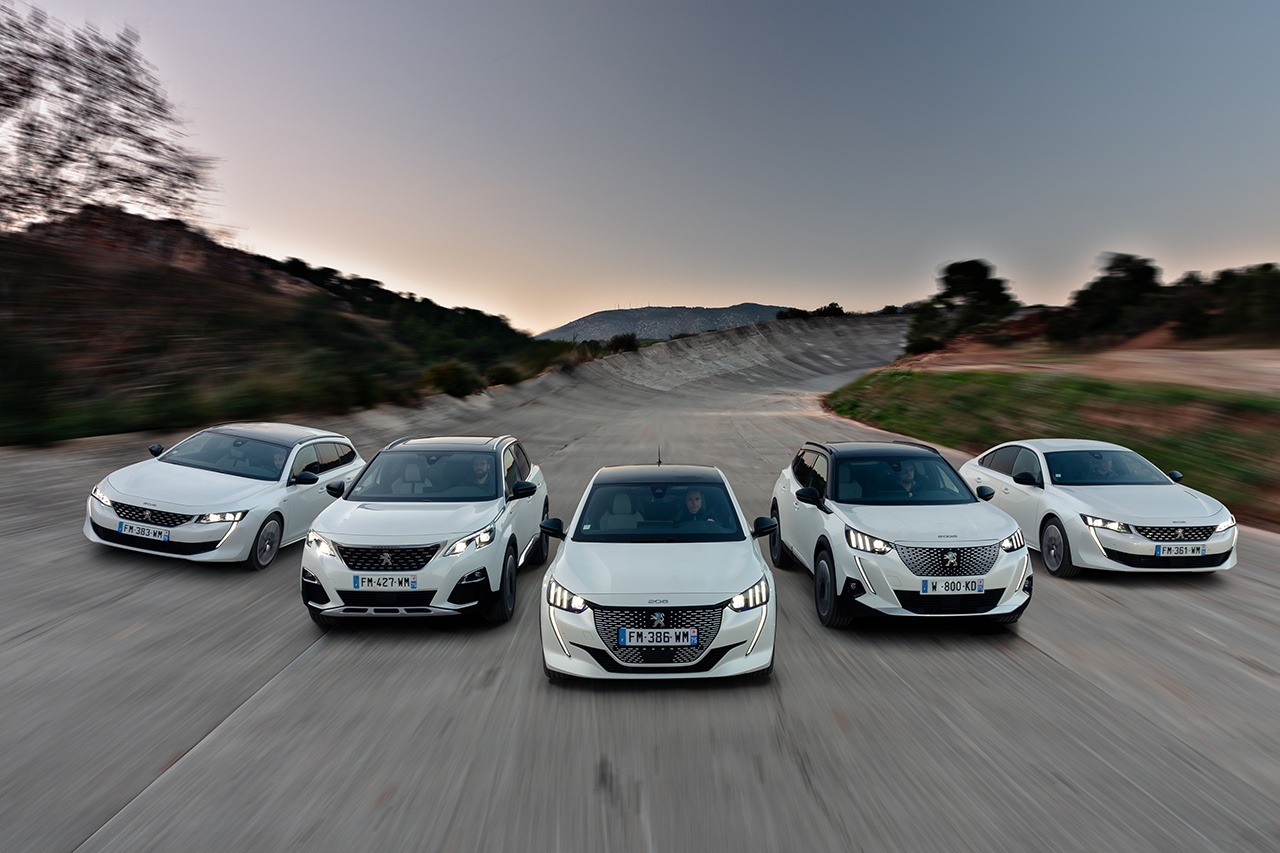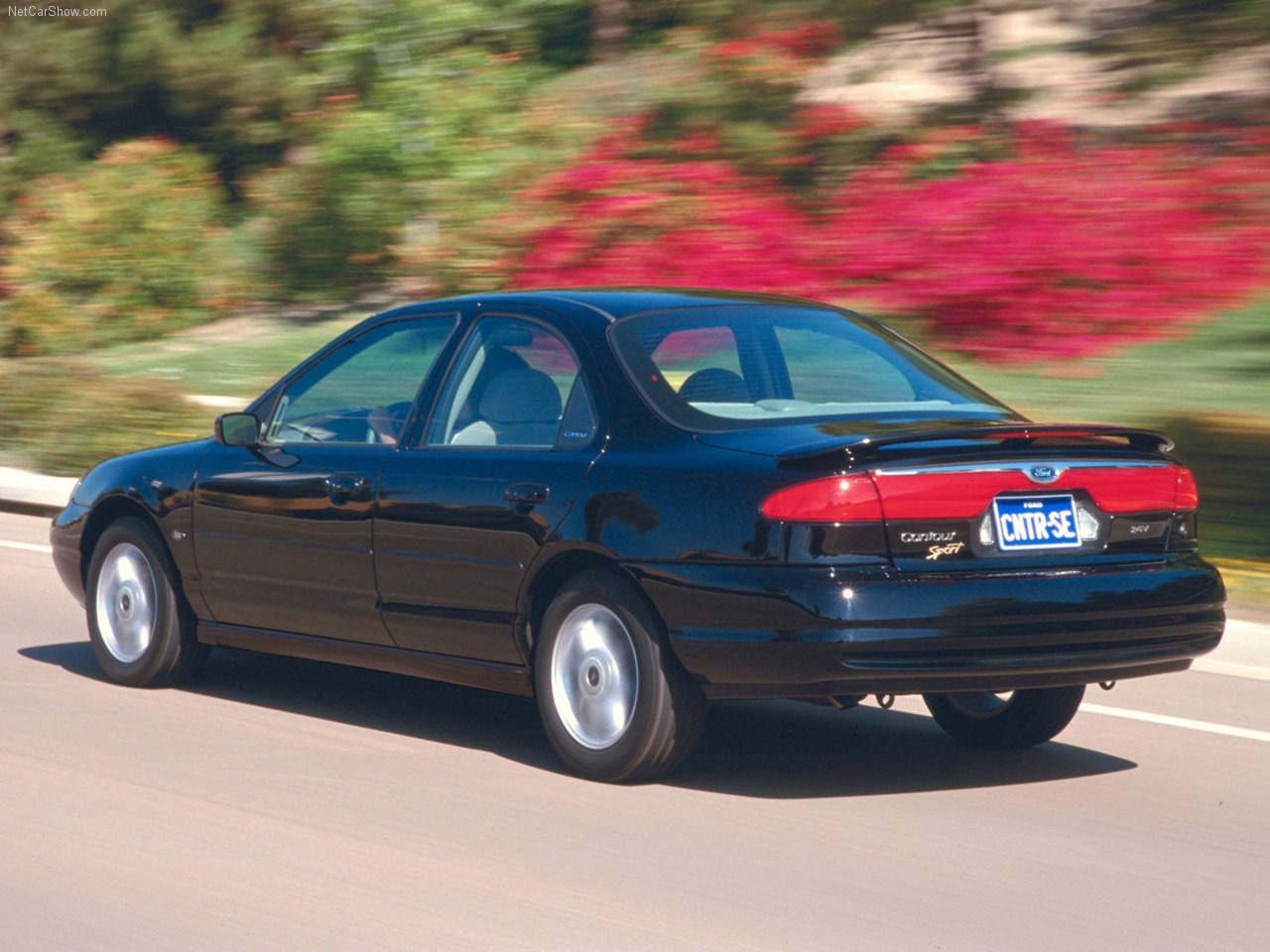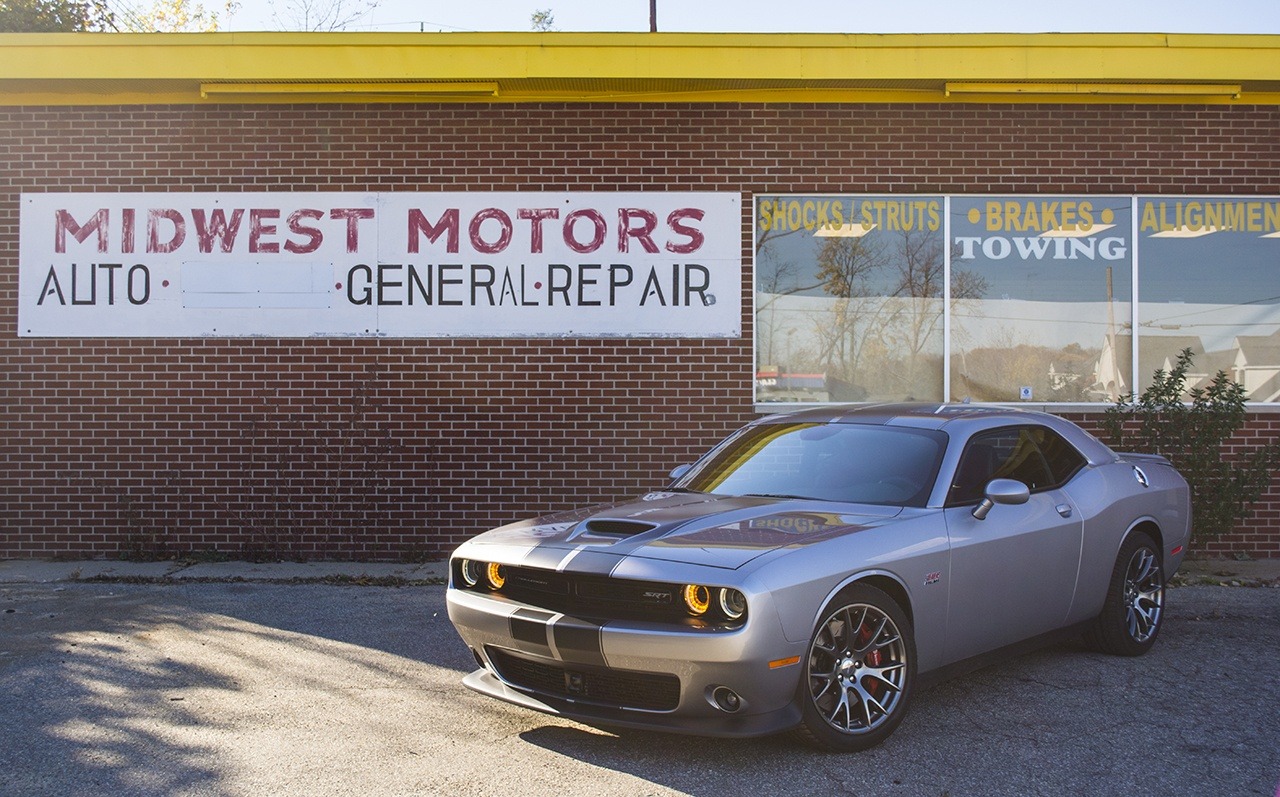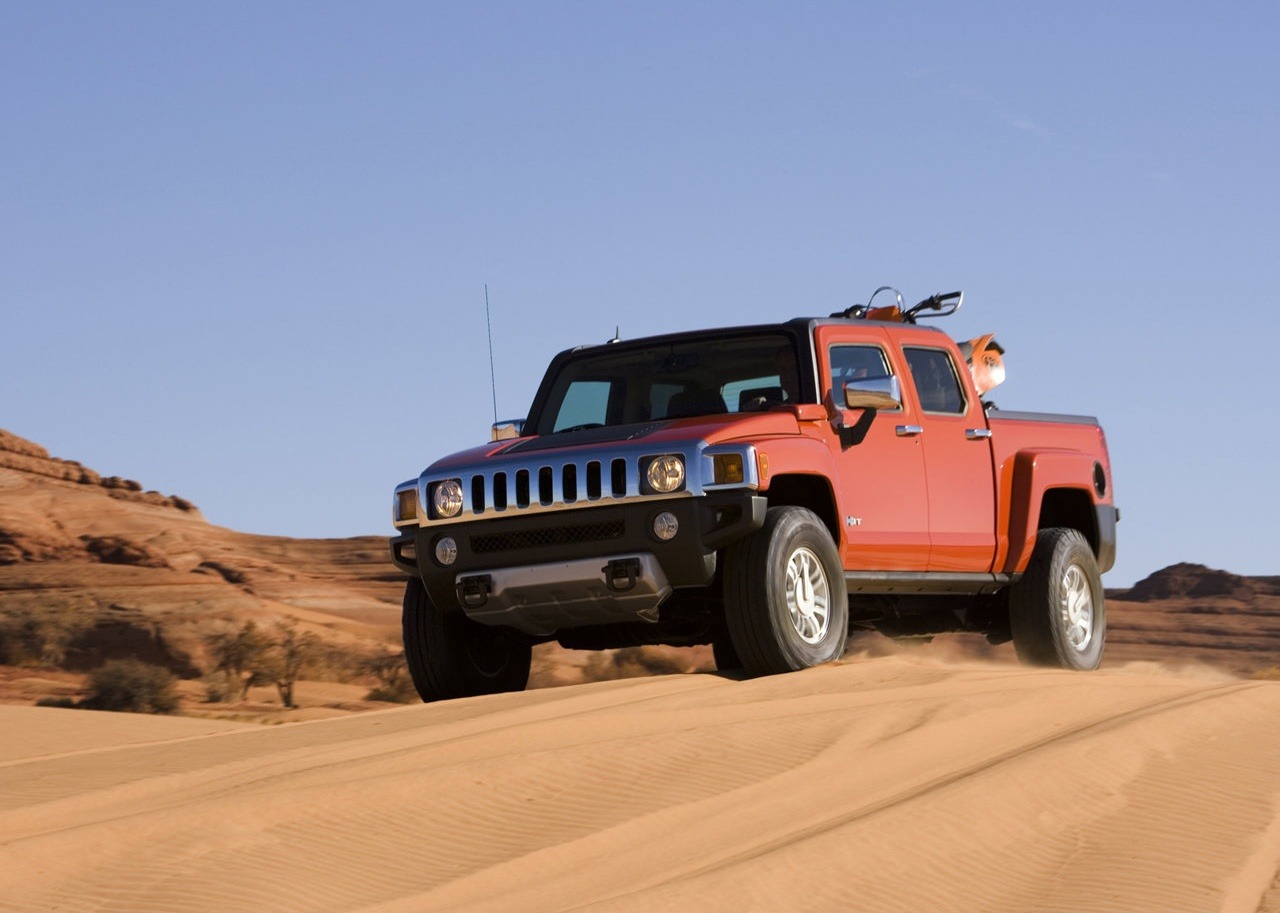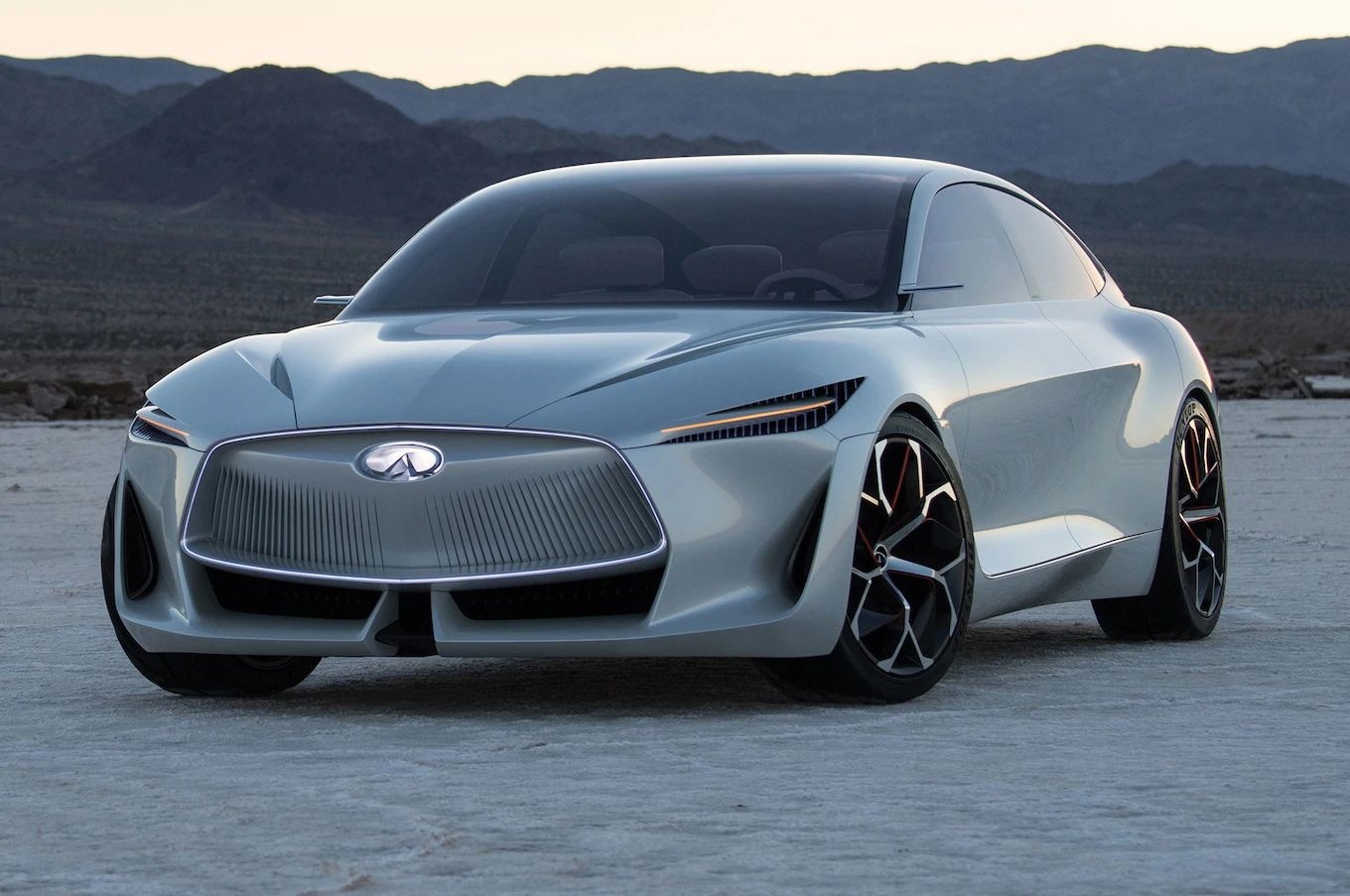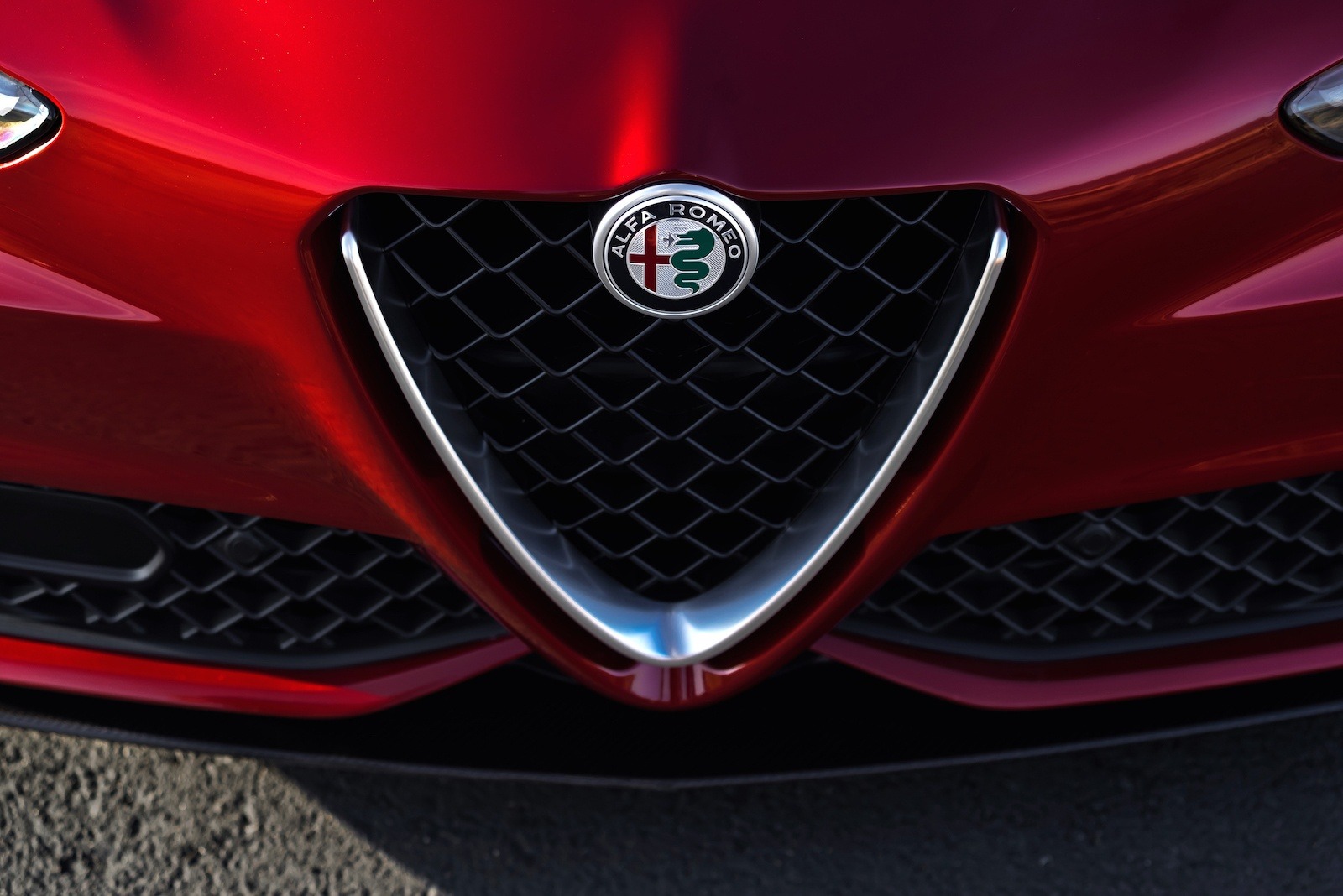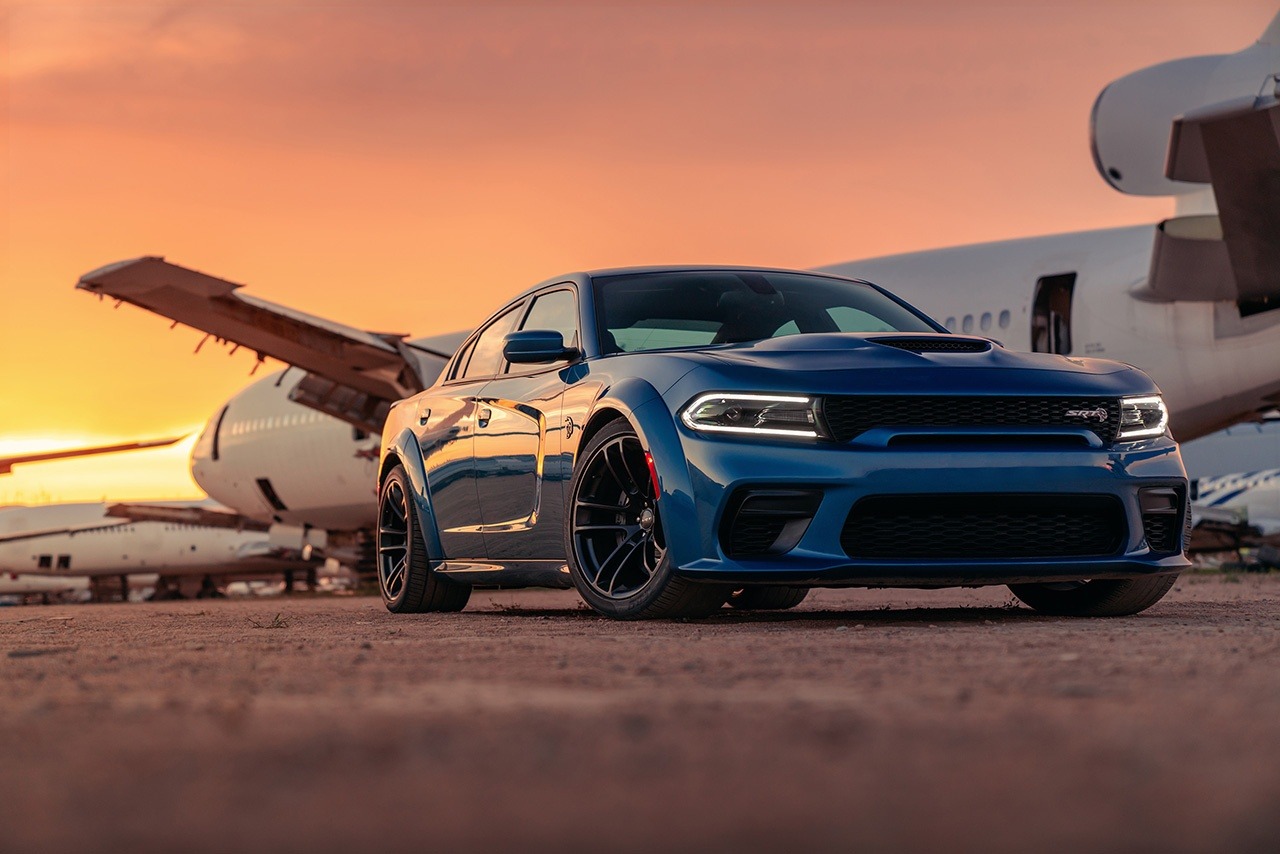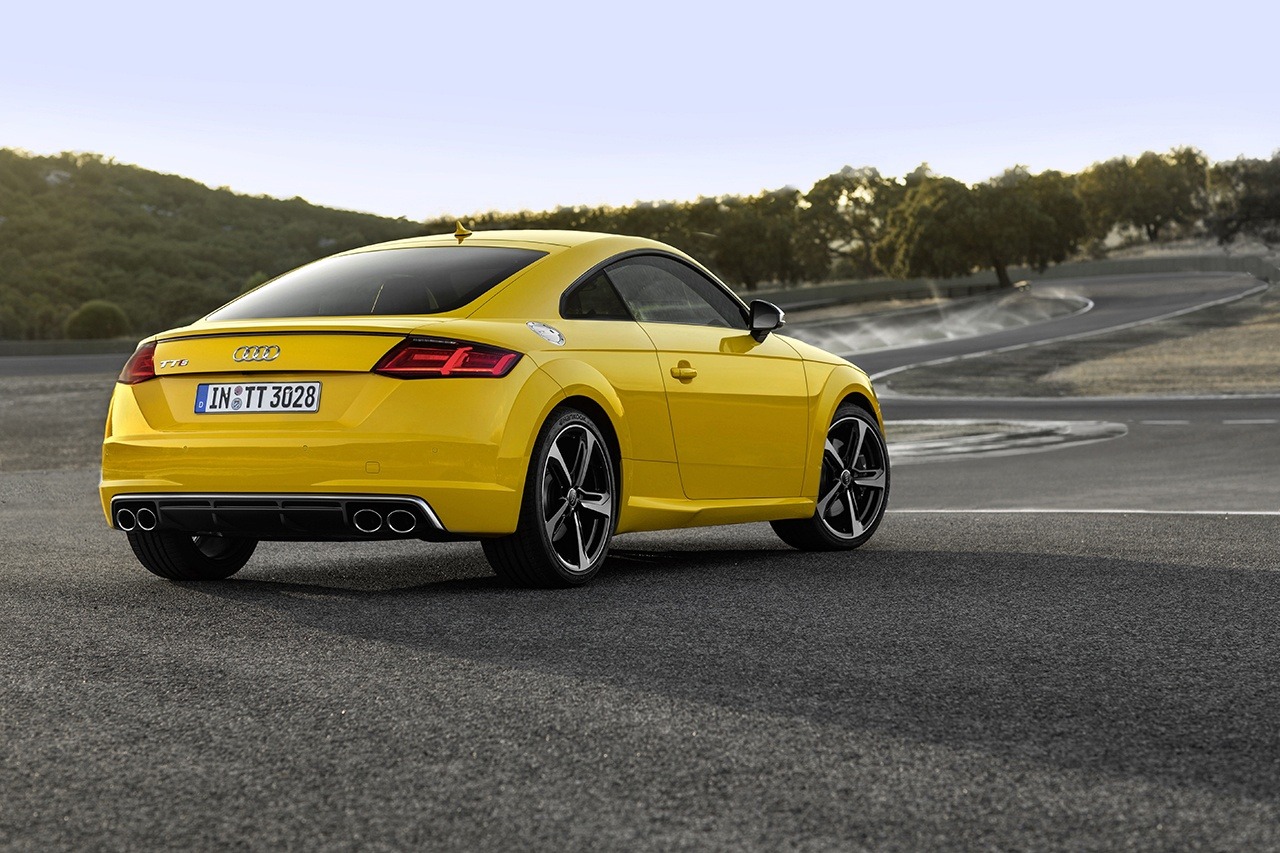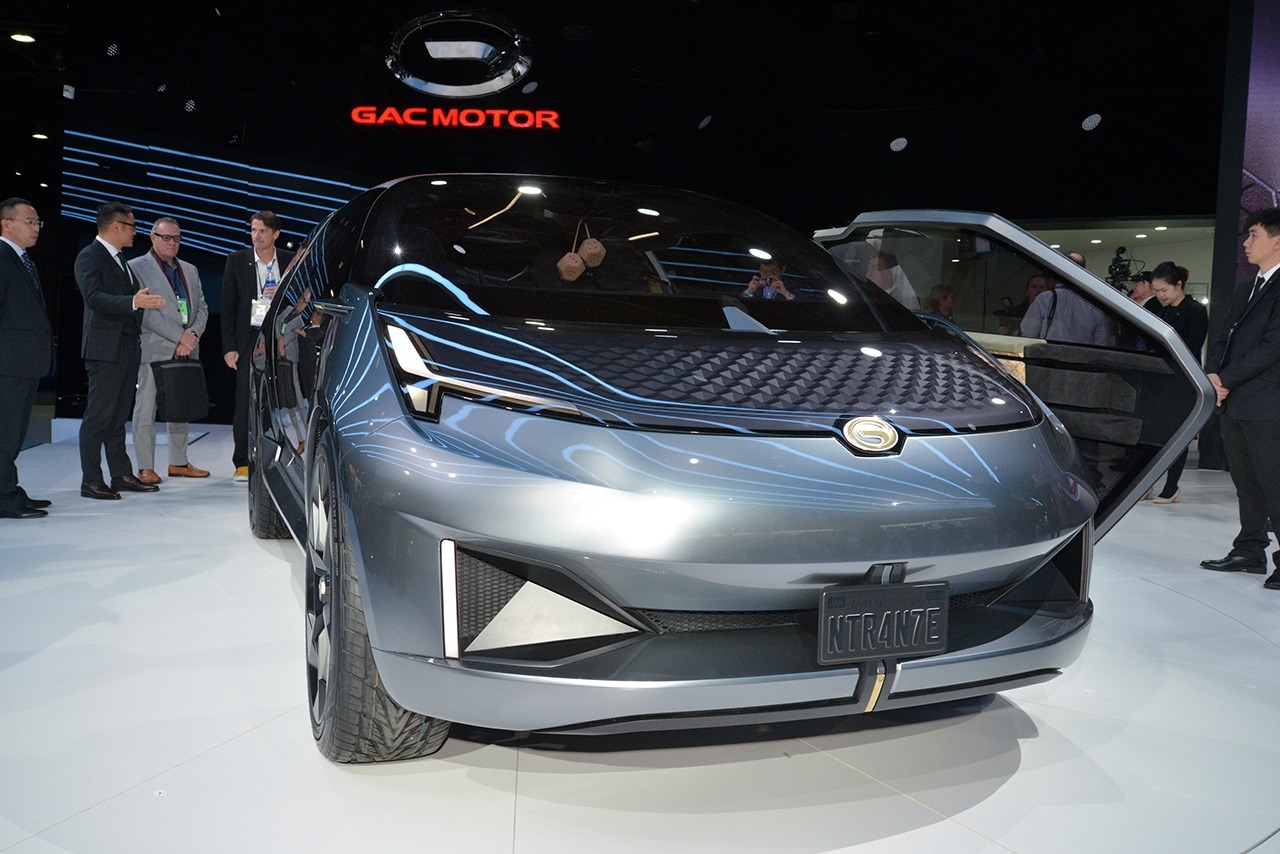Search the Community
Showing results for tags 'plans'.
-

Mazda CX-30's Rotary Range Extender Goes Into A Holding Pattern
William Maley posted an article in Mazda
Mazda and the Rotary Engine has been a "will they or will they not" since production of the RX-8 ended many moons ago. Recently, the Japanese automaker announced the engine would make a return as a range extender for the new MX-30 electric crossover. Those plans have been put on the back burner. "We are still considering using the rotary engine as a range extender, but the timing of its introduction is undecided," said Mazda spokesperson Masahiro Sakata to Automotive News. But the Japanese media tells a different story. AN says Japanese newspapers Nikkei and Nikkan Jidosha Shimbun report the rotary engine plans have been canned because it would require a larger battery, which in turn, increases the price. However, another Japanese outlet, Response says those reports are mistaken. Currently, the MX-30 is on sale in Japan and Europe as an electric only. Mazda will be offering the MX-30 for California later this fall. Many reviewers in Europe say the biggest weak point of the MX-30 is the range - currently rated at 124 miles on the very optimistic WLTP test cycle. Numbers for the U.S. aren't out, but we wouldn't be surprised if its under 100 miles. Using the rotary engine as a generator (see Chevrolet Volt) would have increased the range. We do know Mazda has 10 hybrids and three electric vehicles in the pipeline between 2022 to 2025. Whether or not they will be using a rotary engine is unclear. Source: Automotive News (Subscription Required), Autoblog -
Mazda and the Rotary Engine has been a "will they or will they not" since production of the RX-8 ended many moons ago. Recently, the Japanese automaker announced the engine would make a return as a range extender for the new MX-30 electric crossover. Those plans have been put on the back burner. "We are still considering using the rotary engine as a range extender, but the timing of its introduction is undecided," said Mazda spokesperson Masahiro Sakata to Automotive News. But the Japanese media tells a different story. AN says Japanese newspapers Nikkei and Nikkan Jidosha Shimbun report the rotary engine plans have been canned because it would require a larger battery, which in turn, increases the price. However, another Japanese outlet, Response says those reports are mistaken. Currently, the MX-30 is on sale in Japan and Europe as an electric only. Mazda will be offering the MX-30 for California later this fall. Many reviewers in Europe say the biggest weak point of the MX-30 is the range - currently rated at 124 miles on the very optimistic WLTP test cycle. Numbers for the U.S. aren't out, but we wouldn't be surprised if its under 100 miles. Using the rotary engine as a generator (see Chevrolet Volt) would have increased the range. We do know Mazda has 10 hybrids and three electric vehicles in the pipeline between 2022 to 2025. Whether or not they will be using a rotary engine is unclear. Source: Automotive News (Subscription Required), Autoblog View full article
-
Jaguar Land Rover hasn't been doing very well for the past few years. Numerous issues such as poor sales in China, demand for diesel powered vehicles dropping, and the pandemic have put the automaker in a difficult place. This morning in the United Kingdom, Jaguar Land Rover CEO Thierry Bolloré announced plans to make Jaguar an electric only brand by 2025; Land Rover to launch six electric models; and to become a net-zero-carbon business by 2039. "We are harnessing those ingredients today to reimagine the business, the two brands and the customer experience of tomorrow. The Reimagine strategy allows us to enhance and celebrate that uniqueness like never before. Together, we can design an even more sustainable and positive impact on the world around us," Bolloré said in a statement. Jaguar Out of the two brands, Jaguar is hurting the most. Sales have dropped like a rock due to people stepping away from sedans and diesel powertrains. Bolloré's plan has the brand moving to an all-electric lineup by 2025. Not many details were released or talked about during the press conference this morning. What we do know is, Future models will utilize a new modular electric platform, known as the Electric Modular Architecture (EMA). The planned XJ replacement, rumored to go electric has been canceled. Likely reason for the cancelation is the platform that was going to be used for this model likely didn't scale to other models. Jaguar did say the XJ name could appear again on a future model. Automotive News (Subscription Required) reports that Jaguar will also move away from SUV-styled vehicles, likely meaning the end of the E and F-Pace. Land Rover Land Rover isn't going to dive in quickly as Jaguar into EVs. The plan is to continue offering a mix of powertrains, but with a heavy focus on electrification. Six all-electric models are planned to be launched by 2030, with the first model coming out in 2024. No word on what that model would be, but our guess is possibly a Range Rover EV. Land Rover will use Electric Modular Architecture for EVs, alongside the Modular Longitudinal Architecture (MLA) for hybrids. The goal is to have 60 percent of Land Rover sales be for electrics by 2030. Other Details Jaguar Land Rover said that it would keep all three of its U.K. plans open, but the Castle Bromwich plant(home to Jaguar XE, XF, and F-Type production) has a unclear future. “First we will continue production of our existing nameplates built there to the end of their lifecycle. Then we will explore opportunities to refurbish the plant, which could benefit from the consolidation of businesses scattered across the Midlands,” said Bolloré. Jaguar Land Rover is also planning on moving their executive team and other major management positions to a centralized location in Gaydon, and work more closely with their parent company, Tata Group. Source: Jaguar Land Rover Jaguar Land Rover reimagines the future of modern luxury by design New global strategy – Reimagine – announced for the British company under the leadership of Chief Executive Officer, Thierry Bolloré A sustainability-rich reimagination of modern luxury, unique customer experiences, and positive societal impact Start of journey to become a net zero carbon business by 2039 Reimagination of Jaguar as an all-electric luxury brand from 2025 to ‘realise its unique potential’ In the next five years, Land Rover will welcome six pure electric variants as it continues to be the world leader of luxury SUVs All Jaguar and Land Rover nameplates to be available in pure electric form by end of the decade; first all-electric Land Rover model in 2024 Clean-hydrogen fuel-cell power being developed in preparation for future demand Streamlined structure to deliver greater agility and promote an efficiency of focus Global manufacturing and assembly footprint to be retained, rightsized, repurposed and reorganised Collaborations and knowledge-sharing with industry leaders, in particular from within the wider Tata Group will allow the company to explore potential synergies on clean energy, connected services, data and software development leadership On a path towards double-digit EBIT margin and positive cash flow, with an ambition to achieve positive cash net-of-debt by 2025 with a value creation approach delivering quality and profit-over-volume Gaydon, UK - Monday 15th February 2021: A vision of modern luxury by design Jaguar Land Rover will reimagine the future of modern luxury by design through its two distinct, British brands. Set against a canvas of true sustainability, Jaguar Land Rover will become a more agile creator of the world’s most desirable luxury vehicles and services for the most discerning of customers. A strategy that is designed to create a new benchmark in environmental, societal and community impact for a luxury business. “Jaguar Land Rover is unique in the global automotive industry. Designers of peerless models, an unrivalled understanding of the future luxury needs of its customers, emotionally rich brand equity, a spirit of Britishness and unrivalled access to leading global players in technology and sustainability within the wider Tata Group. “We are harnessing those ingredients today to reimagine the business, the two brands and the customer experience of tomorrow. The Reimagine strategy allows us to enhance and celebrate that uniqueness like never before. Together, we can design an even more sustainable and positive impact on the world around us,” said Mr Bolloré. Two distinct modern luxury brands with sustainability at the centre At the heart of its Reimagine plan will be the electrification of both Land Rover and Jaguar brands on separate architectures with two clear, unique personalities. In a Land Rover, vehicle and driver are united by adventure. By breaking new ground, confronting new challenges and not being content with the expected, Land Rover truly helps people to go ‘Above and Beyond’. In the next five years, Land Rover will welcome six pure electric variants as it continues to be the world leader of luxury SUVs through its three families of Range Rover, Discovery and Defender. The first all-electric variant will arrive in 2024. By the middle of the decade, Jaguar will have undergone a renaissance to emerge as a pure electric luxury brand with a dramatically beautiful new portfolio of emotionally engaging designs and pioneering next-generation technologies. Jaguar will exist to make life extraordinary by creating dramatically beautiful automotive experiences that leave its customers feeling unique and rewarded. Although the nameplate may be retained, the planned Jaguar XJ replacement will not form part of the line-up, as the brand looks to realise its unique potential. Jaguar and Land Rover will offer pure electric power, nameplate by nameplate, by 2030. By this time, in addition to 100% of Jaguar sales, it is anticipated that around 60% of Land Rovers sold will be equipped with zero tailpipe powertrains. Jaguar Land Rover’s aim is to achieve net zero carbon emissions across its supply chain, products and operations by 2039. As part of this ambition, the company is also preparing for the expected adoption of clean fuel-cell power in line with a maturing of the hydrogen economy. Development is already underway with prototypes arriving on UK roads within the next 12 months as part of the long-term investment programme. Sustainability that delivers a new benchmark in environmental and societal impact for the luxury sector is fundamental to the success of Reimagine. A new centralised team will be empowered to build on and accelerate pioneering innovations in materiality, engineering, manufacturing, services and circular economy investments. Annual commitments of circa £2.5bn will include investments in electrification technologies and the development of connected services to enhance the journey and experiences of customers, alongside data-centric technologies that will further improve their ownership ecosystem. Proven services like the flexible PIVOTAL subscription model (which has grown 750% during the fiscal year), born out of Jaguar Land Rover’s incubator and investor arm, InMotion, will now be rolled out to other markets following a successful launch in the UK. Quality and efficiency Reimagine will see Jaguar Land Rover establish new benchmark standards in quality and efficiency for the luxury sector by rightsizing, repurposing and reorganising. Central to that journey, and in order to establish different personalities for the two brands, is the new architecture strategy. Land Rover will use the forthcoming flex Modular Longitudinal Architecture (MLA). It will deliver electrified internal combustion engines (ICE) and full electric variants as the company evolves its product line-up in the future. In addition, Land Rover will also use pure electric biased Electric Modular Architecture (EMA) which will also support advanced electrified ICE. Future Jaguar models will be built exclusively on a pure electric architecture. Reimagine is designed to deliver simplification too. By consolidating the number of platforms and models being produced per plant, the company will be able to establish new benchmark standards in efficient scale and quality for the luxury sector. Such an approach will help rationalise sourcing and accelerate investments in local circular economy supply chains. From a core manufacturing perspective that means Jaguar Land Rover will retain its plant and assembly facilities in the home UK market and around the world. As well as being the manufacturer of the MLA architecture, Solihull, West Midlands will also be the home to the future advanced Jaguar pure electric platform. Key partners including Trade Unions, retailers and those in the supply chain will continue to play a vital part of the extended new Jaguar Land Rover ecosystem and its journey towards reimagining the future of modern luxury. ReFocus to a more agile operation As evidenced with the latest financial results, Jaguar Land Rover has a strong foundation on which to build a sustainable and resilient business for its customers and their communities, partners, employees, shareholders and the environment. Driving this transformation is the recently launched Refocus programme, by consolidating existing initiatives like Charge+ with new cross-functional activities. Reimagine will see Jaguar Land Rover right-size, repurpose and reorganise into a more agile operation. The creation of a flatter structure is designed to empower employees to create and deliver at speed and with clear purpose. To accelerate this efficiency of focus, the company will substantially reduce and rationalise its non-manufacturing infrastructure in the UK. Gaydon will become the symbol of this effort – the ‘reactor’ of the business - with the Executive Team and other management functions moving into the one location to aid frictionless cooperation and agile decision-making. Leapfrog to leadership with Tata Group In order to realise its vision of modern luxury mobility with confidence, the company will curate closer collaboration and knowledge-sharing with Tata Group companies to enhance sustainability and reduce emissions as well as sharing best practice in next-generation technology, data and software development leadership. Jaguar Land Rover has been a wholly-owned subsidiary of Tata Motors, in which Tata Sons is the largest shareholder, since 2008. “We have so many ingredients from within. It is a unique opportunity,” said Mr Bolloré. “Others have to rely solely on external partnerships and compromise, but we have frictionless access that will allow us to lean forward with confidence and at speed.” Bringing all these ingredients together, Jaguar Land Rover is on a path towards double-digit EBIT margins and positive cash flow, with an ambition to achieve positive cash net-of-debt by 2025. Ultimately, Jaguar Land Rover aims to be one of the most profitable luxury manufacturers in the world. Mr N Chandrasekaran, Chairman of Tata Sons, Tata Motors and Jaguar Land Rover Automotive plc commented: “The Reimagine strategy takes Jaguar Land Rover on a significant path of acceleration in harmony with the vision and sustainability priorities of the wider Tata Group. Together, we will help Jaguar realise its potential, reinforce Land Rover’s timeless appeal and collectively become a symbol of a truly responsible business for its customers, society and the planet.” Mr Bolloré concluded: “As a human-centred company, we can, and will, move much faster and with clear purpose of not just reimagining modern luxury but defining it for two distinct brands. Brands that present emotionally unique designs, pieces of art if you like, but all with connected technologies and responsible materials that collectively set new standards in ownership. We are reimagining a new modern luxury by design.”
- 34 comments
-
- 1
-

-
Jaguar Land Rover hasn't been doing very well for the past few years. Numerous issues such as poor sales in China, demand for diesel powered vehicles dropping, and the pandemic have put the automaker in a difficult place. This morning in the United Kingdom, Jaguar Land Rover CEO Thierry Bolloré announced plans to make Jaguar an electric only brand by 2025; Land Rover to launch six electric models; and to become a net-zero-carbon business by 2039. "We are harnessing those ingredients today to reimagine the business, the two brands and the customer experience of tomorrow. The Reimagine strategy allows us to enhance and celebrate that uniqueness like never before. Together, we can design an even more sustainable and positive impact on the world around us," Bolloré said in a statement. Jaguar Out of the two brands, Jaguar is hurting the most. Sales have dropped like a rock due to people stepping away from sedans and diesel powertrains. Bolloré's plan has the brand moving to an all-electric lineup by 2025. Not many details were released or talked about during the press conference this morning. What we do know is, Future models will utilize a new modular electric platform, known as the Electric Modular Architecture (EMA). The planned XJ replacement, rumored to go electric has been canceled. Likely reason for the cancelation is the platform that was going to be used for this model likely didn't scale to other models. Jaguar did say the XJ name could appear again on a future model. Automotive News (Subscription Required) reports that Jaguar will also move away from SUV-styled vehicles, likely meaning the end of the E and F-Pace. Land Rover Land Rover isn't going to dive in quickly as Jaguar into EVs. The plan is to continue offering a mix of powertrains, but with a heavy focus on electrification. Six all-electric models are planned to be launched by 2030, with the first model coming out in 2024. No word on what that model would be, but our guess is possibly a Range Rover EV. Land Rover will use Electric Modular Architecture for EVs, alongside the Modular Longitudinal Architecture (MLA) for hybrids. The goal is to have 60 percent of Land Rover sales be for electrics by 2030. Other Details Jaguar Land Rover said that it would keep all three of its U.K. plans open, but the Castle Bromwich plant(home to Jaguar XE, XF, and F-Type production) has a unclear future. “First we will continue production of our existing nameplates built there to the end of their lifecycle. Then we will explore opportunities to refurbish the plant, which could benefit from the consolidation of businesses scattered across the Midlands,” said Bolloré. Jaguar Land Rover is also planning on moving their executive team and other major management positions to a centralized location in Gaydon, and work more closely with their parent company, Tata Group. Source: Jaguar Land Rover Jaguar Land Rover reimagines the future of modern luxury by design New global strategy – Reimagine – announced for the British company under the leadership of Chief Executive Officer, Thierry Bolloré A sustainability-rich reimagination of modern luxury, unique customer experiences, and positive societal impact Start of journey to become a net zero carbon business by 2039 Reimagination of Jaguar as an all-electric luxury brand from 2025 to ‘realise its unique potential’ In the next five years, Land Rover will welcome six pure electric variants as it continues to be the world leader of luxury SUVs All Jaguar and Land Rover nameplates to be available in pure electric form by end of the decade; first all-electric Land Rover model in 2024 Clean-hydrogen fuel-cell power being developed in preparation for future demand Streamlined structure to deliver greater agility and promote an efficiency of focus Global manufacturing and assembly footprint to be retained, rightsized, repurposed and reorganised Collaborations and knowledge-sharing with industry leaders, in particular from within the wider Tata Group will allow the company to explore potential synergies on clean energy, connected services, data and software development leadership On a path towards double-digit EBIT margin and positive cash flow, with an ambition to achieve positive cash net-of-debt by 2025 with a value creation approach delivering quality and profit-over-volume Gaydon, UK - Monday 15th February 2021: A vision of modern luxury by design Jaguar Land Rover will reimagine the future of modern luxury by design through its two distinct, British brands. Set against a canvas of true sustainability, Jaguar Land Rover will become a more agile creator of the world’s most desirable luxury vehicles and services for the most discerning of customers. A strategy that is designed to create a new benchmark in environmental, societal and community impact for a luxury business. “Jaguar Land Rover is unique in the global automotive industry. Designers of peerless models, an unrivalled understanding of the future luxury needs of its customers, emotionally rich brand equity, a spirit of Britishness and unrivalled access to leading global players in technology and sustainability within the wider Tata Group. “We are harnessing those ingredients today to reimagine the business, the two brands and the customer experience of tomorrow. The Reimagine strategy allows us to enhance and celebrate that uniqueness like never before. Together, we can design an even more sustainable and positive impact on the world around us,” said Mr Bolloré. Two distinct modern luxury brands with sustainability at the centre At the heart of its Reimagine plan will be the electrification of both Land Rover and Jaguar brands on separate architectures with two clear, unique personalities. In a Land Rover, vehicle and driver are united by adventure. By breaking new ground, confronting new challenges and not being content with the expected, Land Rover truly helps people to go ‘Above and Beyond’. In the next five years, Land Rover will welcome six pure electric variants as it continues to be the world leader of luxury SUVs through its three families of Range Rover, Discovery and Defender. The first all-electric variant will arrive in 2024. By the middle of the decade, Jaguar will have undergone a renaissance to emerge as a pure electric luxury brand with a dramatically beautiful new portfolio of emotionally engaging designs and pioneering next-generation technologies. Jaguar will exist to make life extraordinary by creating dramatically beautiful automotive experiences that leave its customers feeling unique and rewarded. Although the nameplate may be retained, the planned Jaguar XJ replacement will not form part of the line-up, as the brand looks to realise its unique potential. Jaguar and Land Rover will offer pure electric power, nameplate by nameplate, by 2030. By this time, in addition to 100% of Jaguar sales, it is anticipated that around 60% of Land Rovers sold will be equipped with zero tailpipe powertrains. Jaguar Land Rover’s aim is to achieve net zero carbon emissions across its supply chain, products and operations by 2039. As part of this ambition, the company is also preparing for the expected adoption of clean fuel-cell power in line with a maturing of the hydrogen economy. Development is already underway with prototypes arriving on UK roads within the next 12 months as part of the long-term investment programme. Sustainability that delivers a new benchmark in environmental and societal impact for the luxury sector is fundamental to the success of Reimagine. A new centralised team will be empowered to build on and accelerate pioneering innovations in materiality, engineering, manufacturing, services and circular economy investments. Annual commitments of circa £2.5bn will include investments in electrification technologies and the development of connected services to enhance the journey and experiences of customers, alongside data-centric technologies that will further improve their ownership ecosystem. Proven services like the flexible PIVOTAL subscription model (which has grown 750% during the fiscal year), born out of Jaguar Land Rover’s incubator and investor arm, InMotion, will now be rolled out to other markets following a successful launch in the UK. Quality and efficiency Reimagine will see Jaguar Land Rover establish new benchmark standards in quality and efficiency for the luxury sector by rightsizing, repurposing and reorganising. Central to that journey, and in order to establish different personalities for the two brands, is the new architecture strategy. Land Rover will use the forthcoming flex Modular Longitudinal Architecture (MLA). It will deliver electrified internal combustion engines (ICE) and full electric variants as the company evolves its product line-up in the future. In addition, Land Rover will also use pure electric biased Electric Modular Architecture (EMA) which will also support advanced electrified ICE. Future Jaguar models will be built exclusively on a pure electric architecture. Reimagine is designed to deliver simplification too. By consolidating the number of platforms and models being produced per plant, the company will be able to establish new benchmark standards in efficient scale and quality for the luxury sector. Such an approach will help rationalise sourcing and accelerate investments in local circular economy supply chains. From a core manufacturing perspective that means Jaguar Land Rover will retain its plant and assembly facilities in the home UK market and around the world. As well as being the manufacturer of the MLA architecture, Solihull, West Midlands will also be the home to the future advanced Jaguar pure electric platform. Key partners including Trade Unions, retailers and those in the supply chain will continue to play a vital part of the extended new Jaguar Land Rover ecosystem and its journey towards reimagining the future of modern luxury. ReFocus to a more agile operation As evidenced with the latest financial results, Jaguar Land Rover has a strong foundation on which to build a sustainable and resilient business for its customers and their communities, partners, employees, shareholders and the environment. Driving this transformation is the recently launched Refocus programme, by consolidating existing initiatives like Charge+ with new cross-functional activities. Reimagine will see Jaguar Land Rover right-size, repurpose and reorganise into a more agile operation. The creation of a flatter structure is designed to empower employees to create and deliver at speed and with clear purpose. To accelerate this efficiency of focus, the company will substantially reduce and rationalise its non-manufacturing infrastructure in the UK. Gaydon will become the symbol of this effort – the ‘reactor’ of the business - with the Executive Team and other management functions moving into the one location to aid frictionless cooperation and agile decision-making. Leapfrog to leadership with Tata Group In order to realise its vision of modern luxury mobility with confidence, the company will curate closer collaboration and knowledge-sharing with Tata Group companies to enhance sustainability and reduce emissions as well as sharing best practice in next-generation technology, data and software development leadership. Jaguar Land Rover has been a wholly-owned subsidiary of Tata Motors, in which Tata Sons is the largest shareholder, since 2008. “We have so many ingredients from within. It is a unique opportunity,” said Mr Bolloré. “Others have to rely solely on external partnerships and compromise, but we have frictionless access that will allow us to lean forward with confidence and at speed.” Bringing all these ingredients together, Jaguar Land Rover is on a path towards double-digit EBIT margins and positive cash flow, with an ambition to achieve positive cash net-of-debt by 2025. Ultimately, Jaguar Land Rover aims to be one of the most profitable luxury manufacturers in the world. Mr N Chandrasekaran, Chairman of Tata Sons, Tata Motors and Jaguar Land Rover Automotive plc commented: “The Reimagine strategy takes Jaguar Land Rover on a significant path of acceleration in harmony with the vision and sustainability priorities of the wider Tata Group. Together, we will help Jaguar realise its potential, reinforce Land Rover’s timeless appeal and collectively become a symbol of a truly responsible business for its customers, society and the planet.” Mr Bolloré concluded: “As a human-centred company, we can, and will, move much faster and with clear purpose of not just reimagining modern luxury but defining it for two distinct brands. Brands that present emotionally unique designs, pieces of art if you like, but all with connected technologies and responsible materials that collectively set new standards in ownership. We are reimagining a new modern luxury by design.” View full article
- 34 replies
-
Yesterday, Fiat Chrysler Automobiles and Groupe PSA officially merged to become Stellantis, the fourth-largest automaker in the world. But this merge has produced some consequences that need to be addressed. One of those being Peugeot's re-entry back in to the U.S. “We were last speaking about [Peugeot’s U.S. re-entry] a year and a half ago, before Stellantis. We can’t not take into account that in the coming days Peugeot will be part of this new world. I imagine in the coming months due to the new strategy we will have to adapt and reconsider all elements, including this one,” said Peugeot CEO Jean-Philippe Imparato to Automotive News. A key reason for this reconsideration not wanting overlap brands in the U.S. This is a polar opposite to comments made last year by Larry Dominique, CEO of PSA North America. Imparto's focus for Peugeot in the near future is concentrating on its core markets - Europe, the Middle East, Africa, and Latin America. There are also plans to get the brand back on track in China. As for the U.S., Imparto said it was "still on the table" down the road. Source: Automotive News (Subscription Required)
-
Yesterday, Fiat Chrysler Automobiles and Groupe PSA officially merged to become Stellantis, the fourth-largest automaker in the world. But this merge has produced some consequences that need to be addressed. One of those being Peugeot's re-entry back in to the U.S. “We were last speaking about [Peugeot’s U.S. re-entry] a year and a half ago, before Stellantis. We can’t not take into account that in the coming days Peugeot will be part of this new world. I imagine in the coming months due to the new strategy we will have to adapt and reconsider all elements, including this one,” said Peugeot CEO Jean-Philippe Imparato to Automotive News. A key reason for this reconsideration not wanting overlap brands in the U.S. This is a polar opposite to comments made last year by Larry Dominique, CEO of PSA North America. Imparto's focus for Peugeot in the near future is concentrating on its core markets - Europe, the Middle East, Africa, and Latin America. There are also plans to get the brand back on track in China. As for the U.S., Imparto said it was "still on the table" down the road. Source: Automotive News (Subscription Required) View full article
-

Despite COVID-19, PSA Group Still Planning A Return By 2023
William Maley posted an article in Peugeot
It has been some time since we last reported on PSA Group's plan to re-enter the U.S. When we last checked in, Peugeot was chosen as the brand to be entering the U.S. by 2023 and rumors were swirling about a possible merger between PSA Group and FCA. A lot has changed since then as the two automakers begin to finalize plans for a merger, and the COVID-19 pandemic has no end in sight in the U.S. What does that mean for Peugeot's return to the U.S.? "My role is to grow the PSA business in North America, growing our mobility capability and preparing for the launch of Peugeot." said Larry Dominique, CEO of PSA North America to Automotive News. "From our standpoint, we're planning as if [the merger] doesn't exist. We're marching forward as if PSA was going to be there by themselves." Dominique is right now focused on the present with the top priority being building out a dealer network for both U.S. and Canada before the launch. He explained that the company is planning a two-prong approach, having franchised dealers and online retailing. "The future success for OEMs is the reduction of distribution costs while ensuring both retail and OEM margin sustainability. This has to be done through strong pricing power, not volume turnover," he said. Part of this is due to COVID-19 pandemic which has many automakers rethinking how they sell vehicles, something Dominique admits is a big challenge. "All my competitors are going to be focusing on digital, which means we have to step up our game and deliver an even stronger customer experience when we launch Peugeot in North America. We need to get out of an environment where the retailers are dependent upon just F&I and service to pay their bills." Another challenge facing Dominique, what models to sell in the U.S. The market has changed a lot since PSA Group announced its intentions to re-enter the U.S. Consumers now are focused on trucks and crossovers. "I don't have a full-sized truck,. But the C and D segments are what's relevant to us. The C and D segments are high volume and important to North America. That's where we're going to focus initially," To us, this hints at the 3008 and 5008 crossovers being some of the first models to be available. Source: Automotive News (Subscription Required) -
It has been some time since we last reported on PSA Group's plan to re-enter the U.S. When we last checked in, Peugeot was chosen as the brand to be entering the U.S. by 2023 and rumors were swirling about a possible merger between PSA Group and FCA. A lot has changed since then as the two automakers begin to finalize plans for a merger, and the COVID-19 pandemic has no end in sight in the U.S. What does that mean for Peugeot's return to the U.S.? "My role is to grow the PSA business in North America, growing our mobility capability and preparing for the launch of Peugeot." said Larry Dominique, CEO of PSA North America to Automotive News. "From our standpoint, we're planning as if [the merger] doesn't exist. We're marching forward as if PSA was going to be there by themselves." Dominique is right now focused on the present with the top priority being building out a dealer network for both U.S. and Canada before the launch. He explained that the company is planning a two-prong approach, having franchised dealers and online retailing. "The future success for OEMs is the reduction of distribution costs while ensuring both retail and OEM margin sustainability. This has to be done through strong pricing power, not volume turnover," he said. Part of this is due to COVID-19 pandemic which has many automakers rethinking how they sell vehicles, something Dominique admits is a big challenge. "All my competitors are going to be focusing on digital, which means we have to step up our game and deliver an even stronger customer experience when we launch Peugeot in North America. We need to get out of an environment where the retailers are dependent upon just F&I and service to pay their bills." Another challenge facing Dominique, what models to sell in the U.S. The market has changed a lot since PSA Group announced its intentions to re-enter the U.S. Consumers now are focused on trucks and crossovers. "I don't have a full-sized truck,. But the C and D segments are what's relevant to us. The C and D segments are high volume and important to North America. That's where we're going to focus initially," To us, this hints at the 3008 and 5008 crossovers being some of the first models to be available. Source: Automotive News (Subscription Required) View full article
-
The COVID-19 pandemic has basically brought most of the world to halt. Orders to stay at home, businesses either having workers to their work from home or closing down, and unemployment skyrocketing is causing the economy to crater. There are efforts to try and jump-start the economy such as $1,200 stimulus checks. But an executive at Ford wants to see a return of a "cash for clunkers" like program. “We think some level of stimulus somewhere on the other side of this would help not only the auto industry and our dealers, which are a huge part of our overall economy, but will help the customers as well,” said Mark LaNeve, Ford’s vice president of U.S. marketing, sales and service to Bloomberg. “Cash for clunkers was very effective at that time. It would be nice to think we could have something equally as effective for 2020 when we get out of this because it was a great program.” According to LaNeve, internal discussions are taking place at Ford about doing a similar program and there are plans to bring the Government in to these talks. When asked by Automotive News about this, Ford spokeswoman Rachel McCleery said, "The auto industry is America’s economic engine.We are encouraging Congress to look at a variety of ways to drive job creation, increase demand, support customers and provide long-term stability for the entire auto ecosystem." A brief refresher on the Cash for Clunkers program. In 2009, the U.S. Government introduced a billion initiative called the Car Allowance Rebate System, which gave a voucher worth between $2,900 and $4,500 to anyone replacing a vehicle newer than 1984. Their old vehicle would be taken away and disposed of. The program was nicknamed Cash for Clunkers. On the surface, the program was a success. Within first month, all of the funds were exhausted. This prompted the U.S. congress infuse an addition two billion into the program, which would be all gone within 17 days. But begin to look deeper and the results are mixed. In 2012, a study published in the Quarterly Journal of Economics described the program as being a bit of a wash, "...the effect of the program on auto purchases is almost completely reversed by as early as March 2010 — only seven months after the program ended.” Other studies have come to the same conclusion. There's also the question of how many perfectly good used cars were taken off the road due to the program. Source: Bloomberg via Automotive News (Subscription Required), The Drive, The Truth About Cars View full article
- 49 replies
-
- cash for clunkers
- ford
-
(and 1 more)
Tagged with:
-

Ford Executive Wants A Sequel To "Cash for Clunkers"
William Maley posted an article in Automotive Industry
The COVID-19 pandemic has basically brought most of the world to halt. Orders to stay at home, businesses either having workers to their work from home or closing down, and unemployment skyrocketing is causing the economy to crater. There are efforts to try and jump-start the economy such as $1,200 stimulus checks. But an executive at Ford wants to see a return of a "cash for clunkers" like program. “We think some level of stimulus somewhere on the other side of this would help not only the auto industry and our dealers, which are a huge part of our overall economy, but will help the customers as well,” said Mark LaNeve, Ford’s vice president of U.S. marketing, sales and service to Bloomberg. “Cash for clunkers was very effective at that time. It would be nice to think we could have something equally as effective for 2020 when we get out of this because it was a great program.” According to LaNeve, internal discussions are taking place at Ford about doing a similar program and there are plans to bring the Government in to these talks. When asked by Automotive News about this, Ford spokeswoman Rachel McCleery said, "The auto industry is America’s economic engine.We are encouraging Congress to look at a variety of ways to drive job creation, increase demand, support customers and provide long-term stability for the entire auto ecosystem." A brief refresher on the Cash for Clunkers program. In 2009, the U.S. Government introduced a billion initiative called the Car Allowance Rebate System, which gave a voucher worth between $2,900 and $4,500 to anyone replacing a vehicle newer than 1984. Their old vehicle would be taken away and disposed of. The program was nicknamed Cash for Clunkers. On the surface, the program was a success. Within first month, all of the funds were exhausted. This prompted the U.S. congress infuse an addition two billion into the program, which would be all gone within 17 days. But begin to look deeper and the results are mixed. In 2012, a study published in the Quarterly Journal of Economics described the program as being a bit of a wash, "...the effect of the program on auto purchases is almost completely reversed by as early as March 2010 — only seven months after the program ended.” Other studies have come to the same conclusion. There's also the question of how many perfectly good used cars were taken off the road due to the program. Source: Bloomberg via Automotive News (Subscription Required), The Drive, The Truth About Cars- 49 comments
-
- 1
-

-
- cash for clunkers
- ford
-
(and 1 more)
Tagged with:
-
The coronavirus has caused a number of auto shows to either be pushed back (New York) or cancelled (Geneva). Add another show to the list as the Detroit Free Press is reporting tonight at the Detroit Auto Show has been cancelled. In a memo that was sent to sponsors today, organizers of the show said that the TCF Center (formally known as Cobo Hall) has been designated as field hospital by Federal Emergency Management Administration [FEMA] for the next six months. "The health and welfare of the citizens of Detroit and Michigan is paramount. TCF Center is the ideal location for this important function at this critical and unprecedented time,” NAIAS executive director Rod Albert wrote in the memo obtained by the Free Press. The news was confirmed by ABC affiliate WXYZ after speaking with the chair of the 2020 show, Doug North. "The North American International Auto Show is officially canceled. TCF is working with FEMA to use the center to deal with the COVID-19 outbreak," said North. Ford and General Motors also confirmed the cancellation to The Detroit News. Michigan is becoming one of the hardest hit states with COVID-19. State officials announced today that there are 4,650 confirmed cases and 111 deaths linked to COVID-19. Wayne County, where the show takes place has the highest numbers of the state - 2,316 confirmed cases and 46 deaths. This was going to be a big year for the Detroit Auto Show with the move to the summer. Plans included rides and drives; an off-road course, and demonstration of autonomous vehicles. Source: Detroit Free Press, The Detroit News, WXYZ
-
The coronavirus has caused a number of auto shows to either be pushed back (New York) or cancelled (Geneva). Add another show to the list as the Detroit Free Press is reporting tonight at the Detroit Auto Show has been cancelled. In a memo that was sent to sponsors today, organizers of the show said that the TCF Center (formally known as Cobo Hall) has been designated as field hospital by Federal Emergency Management Administration [FEMA] for the next six months. "The health and welfare of the citizens of Detroit and Michigan is paramount. TCF Center is the ideal location for this important function at this critical and unprecedented time,” NAIAS executive director Rod Albert wrote in the memo obtained by the Free Press. The news was confirmed by ABC affiliate WXYZ after speaking with the chair of the 2020 show, Doug North. "The North American International Auto Show is officially canceled. TCF is working with FEMA to use the center to deal with the COVID-19 outbreak," said North. Ford and General Motors also confirmed the cancellation to The Detroit News. Michigan is becoming one of the hardest hit states with COVID-19. State officials announced today that there are 4,650 confirmed cases and 111 deaths linked to COVID-19. Wayne County, where the show takes place has the highest numbers of the state - 2,316 confirmed cases and 46 deaths. This was going to be a big year for the Detroit Auto Show with the move to the summer. Plans included rides and drives; an off-road course, and demonstration of autonomous vehicles. Source: Detroit Free Press, The Detroit News, WXYZ View full article
-

Next-Generation Dodge Challenger To Embrace Electrification
William Maley posted an article in Dodge
The Dodge Challenger has been enjoying a resurgence for the past couple of years, due in part to the supercharged variants known as the Hellcat and Demon. But Fiat Chrysler CEO Mike Manley tells the Detroit News, the next-generation Challenger will be quite different. "The reality is those platforms and that technology we used does need to move on. They can’t exist as you get into the middle-2020s. New technology is going to drive a load of weight out, so we can think of the powertrains in a different way. And we can use electrification to really supplement those vehicles," said Manley. "I think that electrification will certainly be part of the formula that says what is American muscle in the future. What it isn’t going to be is a V-8, supercharged, 700-horsepower engine." It is unclear what is in store for the next-generation Challenger. We previously reported that the model would move to the Giorgio platform - what underpins the Alfa Romeo Giulia and Stelvio. But last year, a story came out that next-generation Challenger and Charger would use a heavily re-worked version of the current LX platform - one that can trace its roots back to Mercedes-Benz models from the 1990s. As for possible engines, we wouldn't be surprised if the 2.0L turbo-four found in the Jeep Wrangler becomes available in the next-generation Challenger. There is also the rumor of a new inline-six taking the place of the current Pentastar V6, which we would assume could get some form of electrification. But Kelly Blue Book analyst Karl Brauer is skeptical about muscle cars and electrification co-existing. "There's a long-standing rule about what constitutes American muscle, but electrification is not part of it. I need something that gets my blood pumping," said Brauer. "The Challenger is now challenging the Mustang for sales primacy with a V-8. Who would have thought that? In terms of sales, the supercharged V-8s have worked well." We're guessing that FCA will be keeping some sort of V8 option, possibly one with some sort of electric boost. Source: The Detroit News- 71 comments
-
- 2
-

-
- dodge challenger
- electrification
-
(and 2 more)
Tagged with:
-
The Dodge Challenger has been enjoying a resurgence for the past couple of years, due in part to the supercharged variants known as the Hellcat and Demon. But Fiat Chrysler CEO Mike Manley tells the Detroit News, the next-generation Challenger will be quite different. "The reality is those platforms and that technology we used does need to move on. They can’t exist as you get into the middle-2020s. New technology is going to drive a load of weight out, so we can think of the powertrains in a different way. And we can use electrification to really supplement those vehicles," said Manley. "I think that electrification will certainly be part of the formula that says what is American muscle in the future. What it isn’t going to be is a V-8, supercharged, 700-horsepower engine." It is unclear what is in store for the next-generation Challenger. We previously reported that the model would move to the Giorgio platform - what underpins the Alfa Romeo Giulia and Stelvio. But last year, a story came out that next-generation Challenger and Charger would use a heavily re-worked version of the current LX platform - one that can trace its roots back to Mercedes-Benz models from the 1990s. As for possible engines, we wouldn't be surprised if the 2.0L turbo-four found in the Jeep Wrangler becomes available in the next-generation Challenger. There is also the rumor of a new inline-six taking the place of the current Pentastar V6, which we would assume could get some form of electrification. But Kelly Blue Book analyst Karl Brauer is skeptical about muscle cars and electrification co-existing. "There's a long-standing rule about what constitutes American muscle, but electrification is not part of it. I need something that gets my blood pumping," said Brauer. "The Challenger is now challenging the Mustang for sales primacy with a V-8. Who would have thought that? In terms of sales, the supercharged V-8s have worked well." We're guessing that FCA will be keeping some sort of V8 option, possibly one with some sort of electric boost. Source: The Detroit News View full article
- 71 replies
-
- dodge challenger
- electrification
-
(and 2 more)
Tagged with:
-
General Motors will be bringing back the Hummer name to sell a new electric truck as part of the GMC lineup. The Wall Street Journal first broke the news yesterday with GM moving forward on plans to bring Hummer back that was first reported back in June. The report also said that the company would tout the return with a Super Bowl ad featuring NBA star LeBron James. GM declined to comment. The decision is likely due to the planned $3 billion investment for the Detroit-Hamtramck plant that we reported back in October. The investment is to gear up the plant to build an electric pickup for GMC and an electric Cadillac SUV by 2023. But in 2021, the plant will produce a "low volume BT1 pickup" under a different brand. At the time we speculated that it may be Hummer. This seems to lineup with the reporting done by the Wall Street Journal which says the truck will be similar in design to the Jeep Renegade. Bloomberg adds that there are plans for a large SUV for Hummer if the truck proves successful according to sources. The sources also say that the company is considering selling the new Hummer truck in existing dealers under the name of “Hummer by GMC.” Source: Wall Street Journal (Subscription Required), Automotive News (Subscription Required) H/T to @balthazar for alerting us to this story
- 25 comments
-
- electric truck
- general motors
-
(and 2 more)
Tagged with:
-
General Motors will be bringing back the Hummer name to sell a new electric truck as part of the GMC lineup. The Wall Street Journal first broke the news yesterday with GM moving forward on plans to bring Hummer back that was first reported back in June. The report also said that the company would tout the return with a Super Bowl ad featuring NBA star LeBron James. GM declined to comment. The decision is likely due to the planned $3 billion investment for the Detroit-Hamtramck plant that we reported back in October. The investment is to gear up the plant to build an electric pickup for GMC and an electric Cadillac SUV by 2023. But in 2021, the plant will produce a "low volume BT1 pickup" under a different brand. At the time we speculated that it may be Hummer. This seems to lineup with the reporting done by the Wall Street Journal which says the truck will be similar in design to the Jeep Renegade. Bloomberg adds that there are plans for a large SUV for Hummer if the truck proves successful according to sources. The sources also say that the company is considering selling the new Hummer truck in existing dealers under the name of “Hummer by GMC.” Source: Wall Street Journal (Subscription Required), Automotive News (Subscription Required) H/T to @balthazar for alerting us to this story View full article
- 25 replies
-
- electric truck
- general motors
-
(and 2 more)
Tagged with:
-
Infiniti is planning on launching five new models over the next 3 years. The first will be the QX55 that we reported on the other day. It is a crossover coupe version of their QX50 crossover and is expected to be powered by the same 2.0-liter variable compression engine. Next up is the redesigned QX60. Expect it to look much more SUV like than that of a crossover. Infiniti says the styling will be dramatically different than the QX60 on the lots today. They mention that the gas powered model will have a large grille, which implies there will be an electrified model coming as well. They are also planning on offering two 12.3-inch touch screens and a two-tone roof. The QX60 is Infiniti's best selling vehicle. After that, Infiniti will be launching three electrified vehicles, a crossover and two sedans. The vehicle will be offered as fully electric or with serial hybrid technology which is similar to that in the Chevy Volt where a gasoline engine recharges the batteries which power the car. Styling is expected to take after the Q-Inspiration concept shown at the 2019 Detroit Auto Show. The three vehicles are following a "three vehicles, one platform" concept and will all be related.
-
Infiniti is planning on launching five new models over the next 3 years. The first will be the QX55 that we reported on the other day. It is a crossover coupe version of their QX50 crossover and is expected to be powered by the same 2.0-liter variable compression engine. Next up is the redesigned QX60. Expect it to look much more SUV like than that of a crossover. Infiniti says the styling will be dramatically different than the QX60 on the lots today. They mention that the gas powered model will have a large grille, which implies there will be an electrified model coming as well. They are also planning on offering two 12.3-inch touch screens and a two-tone roof. The QX60 is Infiniti's best selling vehicle. After that, Infiniti will be launching three electrified vehicles, a crossover and two sedans. The vehicle will be offered as fully electric or with serial hybrid technology which is similar to that in the Chevy Volt where a gasoline engine recharges the batteries which power the car. Styling is expected to take after the Q-Inspiration concept shown at the 2019 Detroit Auto Show. The three vehicles are following a "three vehicles, one platform" concept and will all be related. View full article
-
Alfa Romeo still has some crossover rollouts coming, however a recent peak at the quarterly earning statement gave a clue as to what else is happening at the brand, and the truth is, it isn't much. During the earnings call this week, CEO Mike Manley said that Alfa's "future product lineup has been significantly scaled back with a corresponding reduction in capital spend." Alfa currently has two products on the market in North America, the Giulia sedan and Stelvio crossover. Those will both be getting a refresh for the 2021 model year. That same year, a new C-segment crossover will make an appearance. This model, previewed by the Tonale concept car, will ride on the same platform as the Fiat 500x and Jeep Renegade. It should eventually be offered as a plug-in hybrid as well. After that, a B-segment crossover should appear as well. Once the crossovers are on the road though, there isn't much left. The expected return of the GTV and 8C Competizione don't appear anywhere in the plans. View full article
-
Alfa Romeo still has some crossover rollouts coming, however a recent peak at the quarterly earning statement gave a clue as to what else is happening at the brand, and the truth is, it isn't much. During the earnings call this week, CEO Mike Manley said that Alfa's "future product lineup has been significantly scaled back with a corresponding reduction in capital spend." Alfa currently has two products on the market in North America, the Giulia sedan and Stelvio crossover. Those will both be getting a refresh for the 2021 model year. That same year, a new C-segment crossover will make an appearance. This model, previewed by the Tonale concept car, will ride on the same platform as the Fiat 500x and Jeep Renegade. It should eventually be offered as a plug-in hybrid as well. After that, a B-segment crossover should appear as well. Once the crossovers are on the road though, there isn't much left. The expected return of the GTV and 8C Competizione don't appear anywhere in the plans.
-

FCA's New Powertrain Chief Has Big Ambitions for Electrification
William Maley posted an article in Chrysler
Fiat Chrysler Automobiles has been lagging behind other automakers in terms of electrification, tending to focus more on how many more vehicles they drop the Hellcat V8 into. But that appears to be changing. The Detroit Bureau had the chance to speak with FCA's new global powertrain chief, Micky Bly. He said that within the next twelve to eighteen months, FCA would try to reposition itself as one of the industry’s leaders in electrification. “We’re not leaders now,” said Bly, “but we will be soon.” Bly wouldn't go into detail as to how FCA plans to do this. But we already know that a number of FCA brands have plans for hybrid and electric vehicles - including a new Fiat 500e. Sources also revealed that there is the possibility of the Hellcat V8 being teamed with a mild-hybrid setup that could add 130 pound-feet, and only add around 100 pounds to the overall curb weight. There is also the possibility of a production version of the Chrysler Portal concept, going with a full electric powertrain. Source: The Detroit Bureau- 8 comments
-
- electrification
- fca
-
(and 2 more)
Tagged with:
-
Fiat Chrysler Automobiles has been lagging behind other automakers in terms of electrification, tending to focus more on how many more vehicles they drop the Hellcat V8 into. But that appears to be changing. The Detroit Bureau had the chance to speak with FCA's new global powertrain chief, Micky Bly. He said that within the next twelve to eighteen months, FCA would try to reposition itself as one of the industry’s leaders in electrification. “We’re not leaders now,” said Bly, “but we will be soon.” Bly wouldn't go into detail as to how FCA plans to do this. But we already know that a number of FCA brands have plans for hybrid and electric vehicles - including a new Fiat 500e. Sources also revealed that there is the possibility of the Hellcat V8 being teamed with a mild-hybrid setup that could add 130 pound-feet, and only add around 100 pounds to the overall curb weight. There is also the possibility of a production version of the Chrysler Portal concept, going with a full electric powertrain. Source: The Detroit Bureau View full article
- 8 replies
-
- electrification
- fca
-
(and 2 more)
Tagged with:
-
After 20 years, Audi will be sending off the TT coupe and convertible into the great parking lot in the sky. During the brand's annual meeting today, Audi CEO Bram Schot said a new strategy focusing on sustainability means the brand has to cut a number of models that don't make economic sense. “There will be lots of things that we won’t do any more in the future, or things that we do less. We focus maximum resources on our key projects,” said Schot. This is part of an effort to get the brand back on track in terms of sales and profit after the diesel emission scandal which culminated in the arrest of former CEO Rupert Stadler and an 800 million euro ($895 million) fine. Schot did reveal that the TT would be replaced by a new "emotive" electric vehicle in the same price range. No other details were given. The TT isn't the only model on the chopping block. The R8 sportscar is being questioned as to whether or not it fits into Audi's new focus. Also, the successor to the A8 flagship may go all-electric. Source: Automotive News (Subscription Required) View full article
-
After 20 years, Audi will be sending off the TT coupe and convertible into the great parking lot in the sky. During the brand's annual meeting today, Audi CEO Bram Schot said a new strategy focusing on sustainability means the brand has to cut a number of models that don't make economic sense. “There will be lots of things that we won’t do any more in the future, or things that we do less. We focus maximum resources on our key projects,” said Schot. This is part of an effort to get the brand back on track in terms of sales and profit after the diesel emission scandal which culminated in the arrest of former CEO Rupert Stadler and an 800 million euro ($895 million) fine. Schot did reveal that the TT would be replaced by a new "emotive" electric vehicle in the same price range. No other details were given. The TT isn't the only model on the chopping block. The R8 sportscar is being questioned as to whether or not it fits into Audi's new focus. Also, the successor to the A8 flagship may go all-electric. Source: Automotive News (Subscription Required)
-
Guangzhou Automobile Group Co. (GAC) made a big splash at the Detroit Auto Show this year with a number of models destined for the U.S. The plan at the time was to begin talking with dealers at the National Automobile Dealers Association convention in March, with sales to follow early next year. But GAC has postponed plans of coming to the U.S. due to the trade war. In a statement issued to Bloomberg, GAC said “the escalation of China-U.S. trade frictions” and distribution “uncertainties” had made them decide to put their plans on hold. It's unclear how long this postponement will last, but it will likely be some months - maybe years. Many Chinese automakers have made pronouncements to sell vehicles in the U.S. for over a decade, with none coming to shore. As Automotive News notes, Chinese Automaker Zotye as recently as this month was still recruiting dealers and planning to begin sales in the U.S. late next year. Bloomberg reached out to other Chinese automakers, Great Wall: No immediate comment on whether or not it plans on adjusting its plans to coming to the U.S. Lynk & Co. (under the Geely umbrella): Spokesperson said they are "evaluating" plans for North America Source: Bloomberg, Automotive News (Subscription Required)






